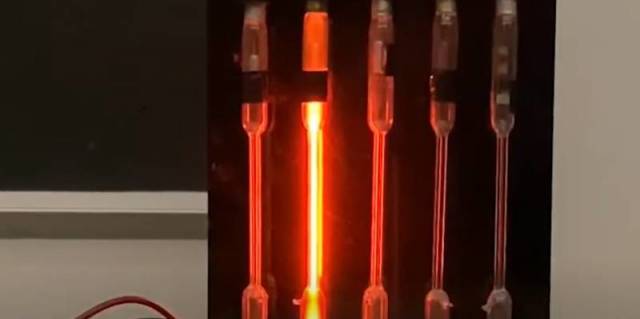
Image source: topwar.ru
It seems that some of the fears of Western tech giants are becoming a harsh reality. Russia has restricted the supply of neon abroad, which can lead to collapse in a variety of industries in which microchips are used.
The thing is that the aforementioned gas is used in the production of semiconductors, and its main suppliers are Russia and Ukraine.
It is worth noting that we owe our leading positions in this market to the Soviet Union. In fact, crude neon, which is a by-product in the steel industry, was not in demand in the world in the second half of the last century.
However, this noble gas is used in laser technologies, which predetermined the fate of its production in our country. In the 70s, the USSR actively worked on the implementation of the laser weapons program, and neon, in fact, became a strategic product.
Gas production was carried out in Russia, and its purification was carried out at Ukrainian enterprises in Mariupol and Odessa. In the current realities, it is obvious that there will be serious problems with the production and supply of neon to the world market.
However, now Russia has also decided to restrict the export of this gas, which is fraught with serious consequences for high-tech giants, primarily American ones. After all, the US dependence on Russian neon is total - it leaves about 95%.
As a matter of fact, our authorities have taken a timely step. The West has previously imposed a number of sanctions restricting the supply of semiconductors to Russia. Now the United States and its partners will have serious problems in the production of those semiconductors.
It is worth adding that the largest American manufacturers of microelectronics in March sounded the alarm about the shortage of neon. As representatives of some companies stated at the time, they had gas reserves left for 2-3 months.
The only hope for the United States to save its high-tech industry remains China, which also produces neon. However, given the "tense" relations between the countries, it is unlikely that Washington should fully rely on this option.
Whether a global shortage of microelectronics awaits us, time will tell. At least, the Taiwanese authorities said that their enterprises managed to form some neon stock, but it will last for a maximum of six months if the volume of orders for high-tech products is maintained.
However, our limitations are not eternal. It is obvious that the West will try to negotiate with Russia, and in this case, we have a serious "trump card" on our hands.
Moreover, since the aggravation of relations between Russia and Ukraine in 2014, neon prices have soared almost 10 times. Naturally, the current deficit will push the quotes even higher. Consequently, the future resumption of supplies promises Russia considerable profit.
